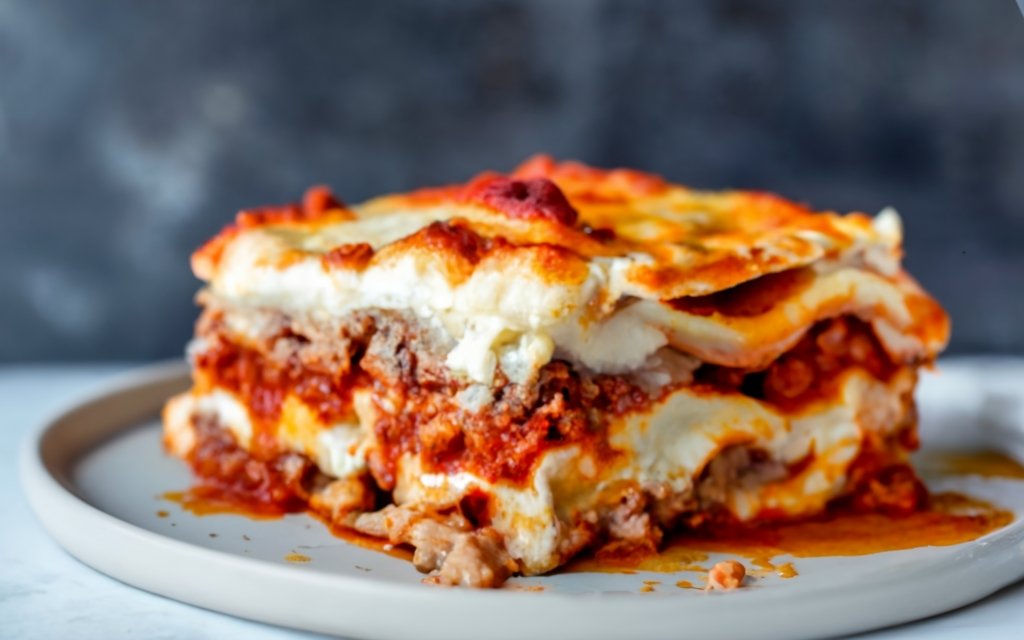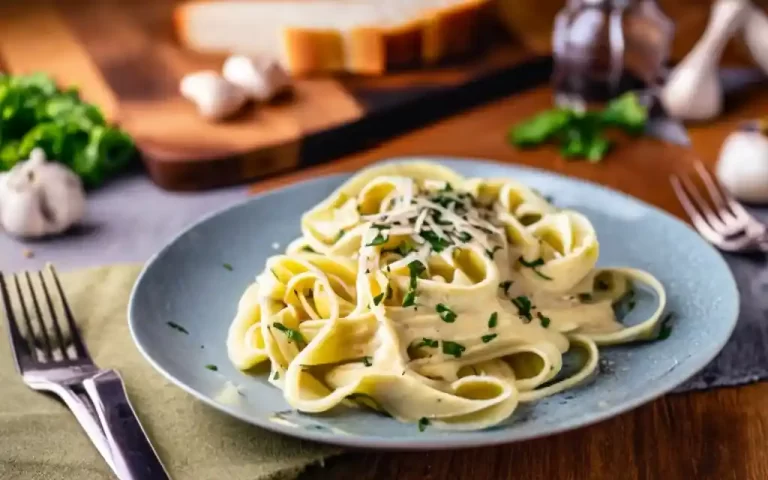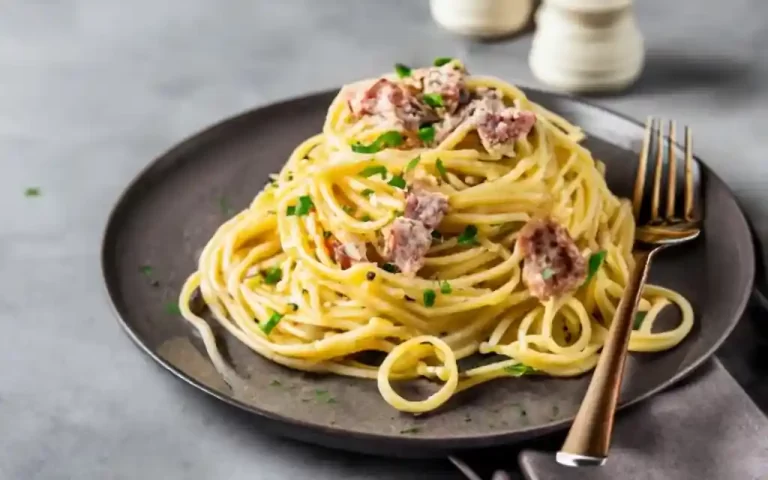How to Make the Perfect Lasagna

Lasagna is a traditional Italian dish that is enjoyed worldwide. It consists of layers of pasta sheets, meat or vegetables, cheese, and tomato sauce. This savoury and hearty dish is loved for its comforting and satisfying flavours.
Lasagna is a type of pasta that is wide and flat in shape, usually layered with meat or vegetables, cheese, and tomato sauce. It is normally baked in the oven until the cheese melts and the edges crisp.
For decades, lasagna has been a mainstay of Italian cuisine. The dish originated in the region of Emilia-Romagna in Northern Italy, where it was traditionally made with layers of pasta, béchamel sauce, and grated Parmigiano-Reggiano cheese.
Lasagna has gained popularity worldwide due to its delicious and comforting flavours. It is a versatile dish that can be customized with a variety of meats or vegetables and can easily feed a crowd. Lasagna is also a great option for meal prep and can be frozen for later use.
The traditional recipe for lasagna includes pasta sheets, tomato sauce, ground beef or sausage, ricotta cheese, mozzarella cheese, Parmesan cheese, and herbs such as oregano and basil. Vegetarian options can be made using vegetables such as spinach, eggplant, or zucchini.
Ingredients
List of all the ingredients needed to make lasagna:
- Lasagna noodles
- Ground beef or ground Italian sausage (or substitute for vegetarian protein)
- Tomato sauce
- Crushed tomatoes
- Onion
- Garlic
- Italian seasoning
- Salt
- Black pepper
- Ricotta cheese
- Mozzarella cheese
- Parmesan cheese
Explanation of the role each ingredient plays in the recipe:
- Lasagna noodles: The base of the dish, provide structure and texture to the lasagna layers.
- Ground beef or ground Italian sausage (or substitute for vegetarian protein): Adds a meaty flavour and protein to the dish. Vegetarian protein substitutes like tofu, seitan or plant-based ground meat can be used instead of meat.
- Tomato sauce: The main sauce that coats the meat and noodles, adds a rich and tangy flavour to the dish.
- Crushed tomatoes: Adds texture and thickness to the sauce.
- Onion: Adds flavour and aroma to the sauce.
- Garlic: Adds a distinct flavour and aroma to the sauce.
- Italian seasoning: A blend of dried herbs like basil, oregano, and thyme, it adds an Italian flavour profile to the dish.
- Salt: Enhances the flavour of the dish.
- Black pepper: Adds a mild spicy kick to the dish.
- Ricotta cheese: A creamy and slightly sweet cheese that is traditionally used in lasagna, it provides a rich and indulgent flavour to the dish.
- Mozzarella cheese: A mild and stretchy cheese that melts beautifully, it provides a gooey and cheesy texture to the dish.
- Parmesan cheese: A salty and sharp cheese that adds a nutty and savoury flavour to the dish. It is usually sprinkled on top of the lasagna layers.
The combination of these ingredients creates a perfect balance of flavours and textures in the lasagna.
Preparation
Steps for making lasagna from scratch:
- Prepare the sauce: Start by making a flavorful tomato sauce for the lasagna. You can use canned tomatoes or fresh tomatoes to make the sauce. Saute chopped onions and garlic in olive oil until they are soft and fragrant. Then add canned or fresh tomatoes and cook until the sauce thickens. Season with salt, pepper, and Italian herbs like oregano and basil.
- Cook the meat: If you are using ground meat, cook it in a separate pan until it is browned and cooked through. Drain and set aside any surplus fat.
- Cook the pasta: Boil lasagna noodles in a large pot of salted water until they are al dente. Drain and rinse the noodles with cold water to prevent them from sticking together.
- Assemble the layers: Preheat the oven to 375°F (190°C). Spread a thin layer of tomato sauce on the bottom of a baking dish. Add a layer of lasagna noodles, followed by a layer of meat (if using), a layer of ricotta cheese, and a layer of shredded mozzarella cheese. Repeat the layering until all of the ingredients have been used up.
- Bake the lasagna: Cover the lasagna with foil and bake for 25 minutes. Then remove the foil and continue to bake for another 25 minutes or until the cheese is melted and bubbly.
Tips for getting the perfect texture and flavour of lasagna:
- Don’t overcook the noodles: Boil the lasagna noodles until they are al dente, or slightly firm to the bite. This will help prevent them from becoming mushy when baked.
- Use a flavorful tomato sauce: The sauce is the heart of the lasagna, so use high-quality canned tomatoes or fresh tomatoes to make a delicious sauce. Don’t skimp on the herbs and spices, which add depth and flavour to the sauce.
- Use enough cheese: Lasagna is a cheesy dish, so make sure to use enough cheese to create that gooey, melty texture. A combination of shredded mozzarella and grated Parmesan cheese is traditional, but you can experiment with other types of cheese as well.
- Let the lasagna rest before serving: After the lasagna comes out of the oven, let it rest for at least 10-15 minutes before slicing and serving. This will help the layers set and make it easier to cut and serve.
Suggestions for variations of the recipe:
- Vegetarian lasagna: Leave out the meat and add sauteed vegetables like spinach, mushrooms, and zucchini instead. You can also use a meat substitute like crumbled tofu or vegetarian sausage.
- Meatless lasagna: Replace the meat with a vegetarian meat substitute like crumbled tofu or tempeh.
- White lasagna: Use a white sauce made from butter, flour, and milk instead of tomato sauce. Add sauteed spinach and garlic for flavour, and use a combination of ricotta, mozzarella, and Parmesan cheese.
- Seafood lasagna: Add sauteed shrimp, scallops, or crabmeat to the layers of lasagna for a delicious seafood twist.
Layering
Layering lasagna can seem daunting, but with a little know-how, it can be a breeze. The first layer of lasagna should always be a thin layer of sauce, which helps prevent the pasta from sticking to the bottom of the pan. Next, add a layer of cooked noodles, slightly overlapping them. Spread a layer of the meat sauce over the noodles, followed by a layer of the ricotta mixture and a sprinkle of shredded mozzarella cheese. Repeat until all of the ingredients are used up, finishing with a layer of mozzarella cheese on top. Cover the lasagna with aluminium foil and bake it in the oven until it is hot and bubbly.
To mix things up a bit, try using different cheeses or adding vegetables to your layers. For example, you could use a combination of ricotta, Parmesan, and mozzarella cheese to add more depth to the flavours. Alternatively, you could add thinly sliced zucchini or eggplant as a layer between the noodles and the sauce to boost the nutritional content and give the lasagna a vegetarian twist.
Baking and Serving
Tips for baking lasagna:
- Preheat the oven to 375°F.
- Cover the lasagna with aluminium foil and bake for 25-30 minutes.
- Remove the foil and continue baking for another 25-30 minutes, or until the cheese is melted and bubbling.
- Allow the lasagna to rest for about 10-15 minutes before serving.
Suggestions for serving lasagna:
- Sprinkle chopped fresh herbs such as basil, parsley, or oregano on top of the lasagna for extra flavour and freshness.
- Serve with a side salad or steamed vegetables to balance out the richness of the dish.
- Pair with a glass of red wine, such as Chianti or Sangiovese, to complement the flavours of the lasagna.
- Serve with garlic bread or crusty bread to soak up the delicious sauce.
Nutritional Information and Dietary Considerations
Lasagna is a dish that is high in calories, fat, and carbohydrates due to its ingredients. However, with some modifications, it can be made healthier or more suitable for different dietary needs. Here are some things to consider:
A serving of lasagna typically contains around 300-500 calories, depending on the ingredients used. It is also high in carbohydrates, with around 30-50 grams per serving, and can contain up to 20 grams of fat. Lasagna is also a good source of protein, with around 15-20 grams per serving.
- Vegetarian lasagna: To make a vegetarian lasagna, simply omit the meat and add more vegetables such as zucchini, eggplant, or spinach. You can also add meat substitutes like tofu or tempeh.
- Gluten-free lasagna: Use gluten-free lasagna noodles, which are typically made from rice flour or corn flour. You can also use thinly sliced zucchini or eggplant instead of noodles.
- Low-carb lasagna: Use thinly sliced zucchini or eggplant instead of noodles, and skip the bread crumbs or use almond flour instead. You can also use a mixture of ricotta and cottage cheese instead of traditional cheese.
- Vegan lasagna: Omit the meat and cheese, and use a vegan cheese substitute. You can also make cashew cheese by soaking raw cashews and blending them with nutritional yeast, lemon juice, and salt.
- Dairy-free lasagna: Use a dairy-free cheese substitute, such as soy cheese or almond cheese. You can also use a mixture of tofu and nutritional yeast to create a cheesy flavour.
- Lower-fat lasagna: Use low-fat cheese or skip the cheese altogether. You can also use ground turkey or chicken instead of beef to lower the fat content.
- Healthier sauce: Use a homemade sauce made with fresh tomatoes, onions, and garlic instead of store-bought sauce, which can be high in sugar and preservatives.
- Portion control: Lasagna is a filling dish, so it’s easy to overeat. To control your portions, use a smaller pan or make individual servings in ramekins.
By making these modifications, you can make lasagna a healthier and more suitable dish for different dietary needs.
Storage and Reheating
Lasagna can be stored in the refrigerator or freezer for later use. Here are some tips for storing and reheating lasagna:
- Refrigerator Storage: Allow the lasagna to cool down completely before storing it in an airtight container or wrapping it tightly in plastic wrap or aluminium foil. It can be stored in the refrigerator for up to three to four days.
- Freezer Storage: Lasagna can be frozen before or after baking. For freezing before baking, prepare the lasagna according to the recipe and freeze it in the baking dish. Once the lasagna is frozen, remove it from the baking dish and wrap it tightly in plastic wrap or aluminium foil. For freezing after baking, allow the lasagna to cool down completely before freezing. Wrap it tightly in plastic wrap or aluminium foil and then place it in an airtight container or freezer-safe bag. Lasagna can be stored in the freezer for up to three months.
- Refrigerator Reheating: To reheat lasagna from the refrigerator, remove it from the storage container and place it in a baking dish. Cover the baking dish with foil and bake it in the oven at 350°F for 15 to 20 minutes or until heated through.
- Freezer Reheating: To reheat lasagna from the freezer, remove it from the freezer and let it thaw overnight in the refrigerator. Once it has thawed, follow the same steps as for reheating lasagna from the refrigerator.
- Microwave Reheating: Lasagna can also be reheated in the microwave. Cut a slice of lasagna and place it on a microwave-safe plate. Cover the plate with a damp paper towel and microwave on high for one to two minutes or until heated through. Repeat the process for additional slices.
Note: Reheating times may vary depending on the amount and size of lasagna being reheated and the type of oven or microwave being used. Always ensure the internal temperature of the lasagna reaches 165°F before consuming it.
Conclusion
In conclusion, lasagna is a classic Italian dish that has become popular worldwide. It consists of layers of pasta, meat sauce, and cheese, baked until golden and bubbly. The recipe can be customized to suit individual tastes and dietary needs, making it a versatile and delicious option for any occasion.
Making lasagna at home can be a fun and rewarding experience. To get the best results, it is important to choose high-quality ingredients and follow the recipe carefully. Don’t be afraid to experiment with different types of cheese or vegetables to make the dish your own. And remember, lasagna is a great make-ahead dish that can be frozen and reheated for a quick and easy meal.
If you have any feedback, comments, or questions about this lasagna recipe, we would love to hear from you. Please feel free to leave a comment below or reach out to us through our contact page. Happy cooking!
Lasagna FAQs
Can I make lasagna without meat?
Yes, you can make lasagna without meat. Simply substitute the meat with vegetables or a meat alternative such as tofu or tempeh.
What is the best cheese for lasagna?
A combination of mozzarella and parmesan cheese is ideal for lasagna. You can also add ricotta cheese for a creamier texture.
How long does lasagna last in the fridge?
Lasagna can last up to 5 days in the fridge if stored properly in an airtight container.
Can I freeze lasagna?
Yes, you can freeze lasagna. Allow the lasagna to cool completely, then wrap it tightly in plastic wrap and aluminium foil before placing it in the freezer.
How do I reheat lasagna?
To reheat lasagna, preheat the oven to 350°F, cover the lasagna with foil, and bake for 30-40 minutes or until heated through.
What can I serve with lasagna?
You can serve garlic bread, a side salad, or roasted vegetables with lasagna.
How do I make lasagna sauce?
To make lasagna sauce, sauté garlic and onion in olive oil, add canned tomatoes, tomato paste, and Italian herbs, then simmer until thickened.
Can I make lasagna ahead of time?
Yes, you can make lasagna ahead of time and store it in the fridge or freezer until ready to bake.
Is lasagna healthy?
Lasagna can be made healthier by using whole wheat pasta, lean meat, and low-fat cheese. However, it is still a calorie-dense dish and should be eaten in moderation.






